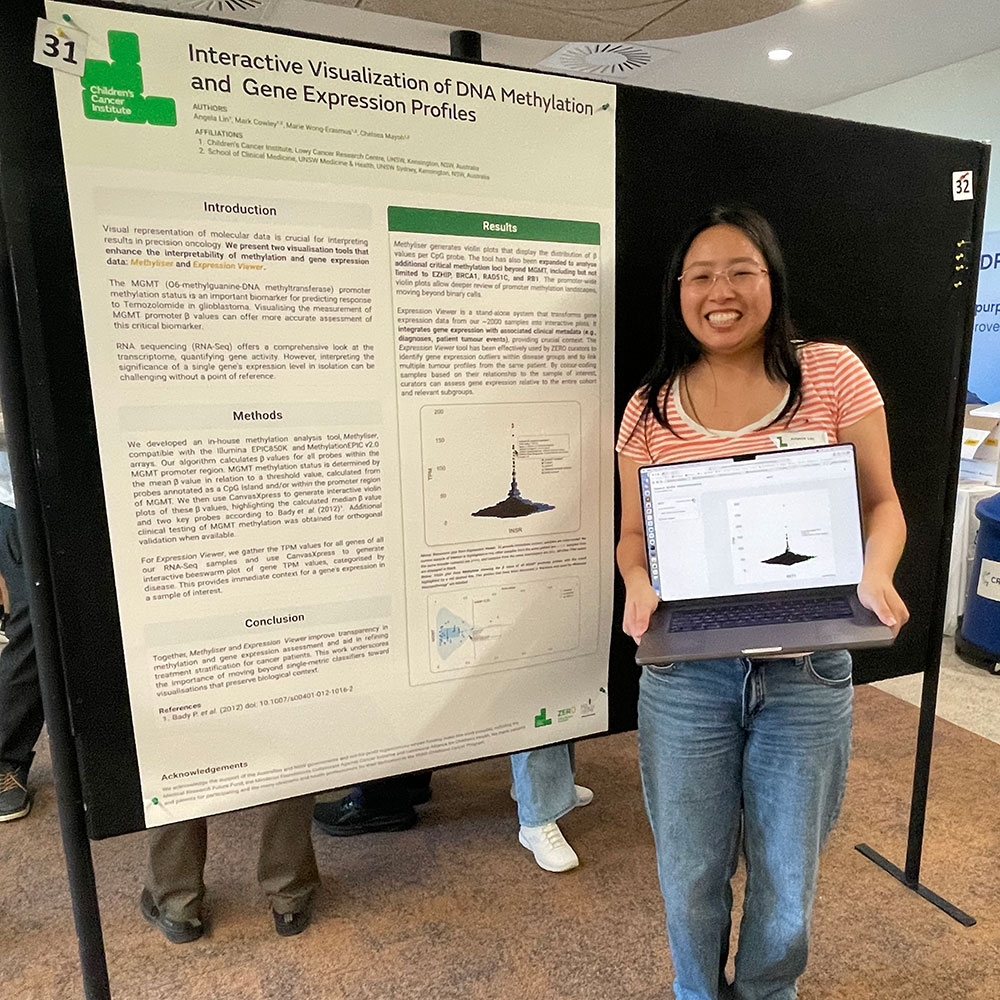In collaboration with scientists at ANSTO (Australian Nuclear Science and Technology Organisation), Project Leader Dr Orazio Vittorio and his team have developed a method for measuring the amount of copper inside neuroblastoma tumours.
Their research was published last week in the journal Theranostics. The method is based on PET (Positron Emission Tomography) imaging, a medical procedure commonly used to evaluate the function of organs and tissues in the body.
This is the first time that PET imaging has been used to measure the amount of copper in neuroblastoma cells, and to monitor the effect of a drug that targets copper. But first a bit of background. Why copper?
Copper and neuroblastoma
Copper is a trace element that plays a central role in cellular processes, and the amount of copper inside cells is finely regulated. Research has shown that copper levels are significantly higher in many types of cancer, such as leukaemia, ovarian, prostate and breast cancer, than in normal cells. This makes copper an attractive target when designing new anti-cancer drugs.
Previous work by Dr Vittorio and his team found that copper levels are also higher in neuroblastoma. Moreover, the team showed that a drug that targets copper, called Dextran-Catechin, significantly slows tumour growth in a mouse model of neuroblastoma.
Their findings suggested that copper-targeting drugs could be an effective new treatment for neuroblastoma.
Using PET imaging to monitor copper levels
To take this further they needed a tool to measure copper levels inside neuroblastoma tumours in living organisms. So, in collaboration with an ANSTO team led by Dr Arvind Parmar and Dr Giancarlo Pascali, they developed a method using [64Cu]CuCl2-PET imaging to measure copper in a mouse model of neuroblastoma. With it they could study the effects of therapies like Dextran-Catechin.

Closing the door on copper
The imaging showed that Dextran-Catechin decreases the amount of copper in neuroblastoma tumours. But how does it do that?
The amount of copper in cells is controlled in various ways. One important entry route is through a protein in the cell membrane called Copper Transporter 1 (CTR1).
In the present study the team measured the amount of CTR1 in neuroblastoma patient samples. Many of these samples had very high levels of CTR1 compared to normal tissues, as shown in the top image (see caption below).
The team hypothesised that Dextran-Catechin might be decreasing the amount of copper in neuroblastoma tumours by decreasing the amount of CTR1. Less transporter, less copper. When they looked at CTR1 in tumours from mice treated with Dextran-Catechin, they found that this was indeed the case.

Dr Vittorio is excited by the potential applications of this imaging method.
“This study represents the first application of [64Cu]CuCl2-PET imaging to assess the molecular mechanism of copper-targeting drugs for cancer treatment,” he said.
“We believe that these results may advance the potential clinical use of copper-targeting drugs. [64Cu]CuCl2-PET imaging could be used to treat and monitor neuroblastoma and other types of tumours.”
Read the research article.
Top image: The copper transporter CTR1 (stained brown) is present at much higher levels on neuroblastoma cells (right) than on liver cells (left) or kidney cells (middle).
(All images are taken from the Theranostics article).















